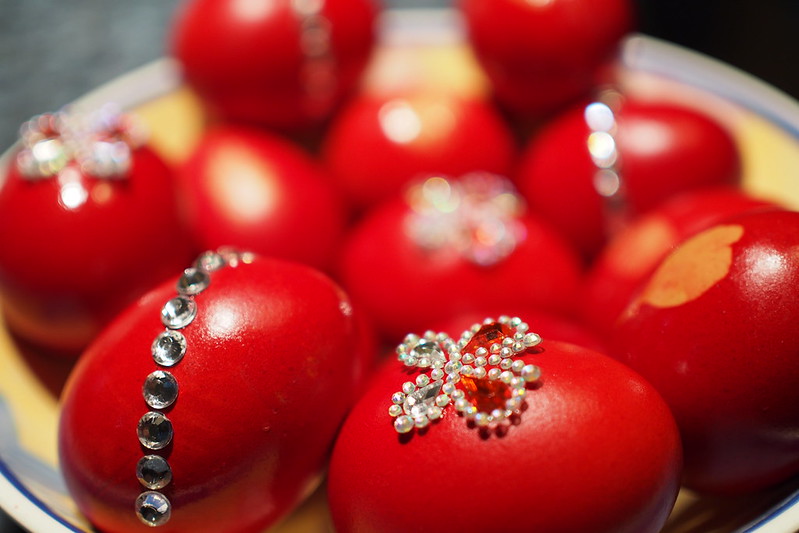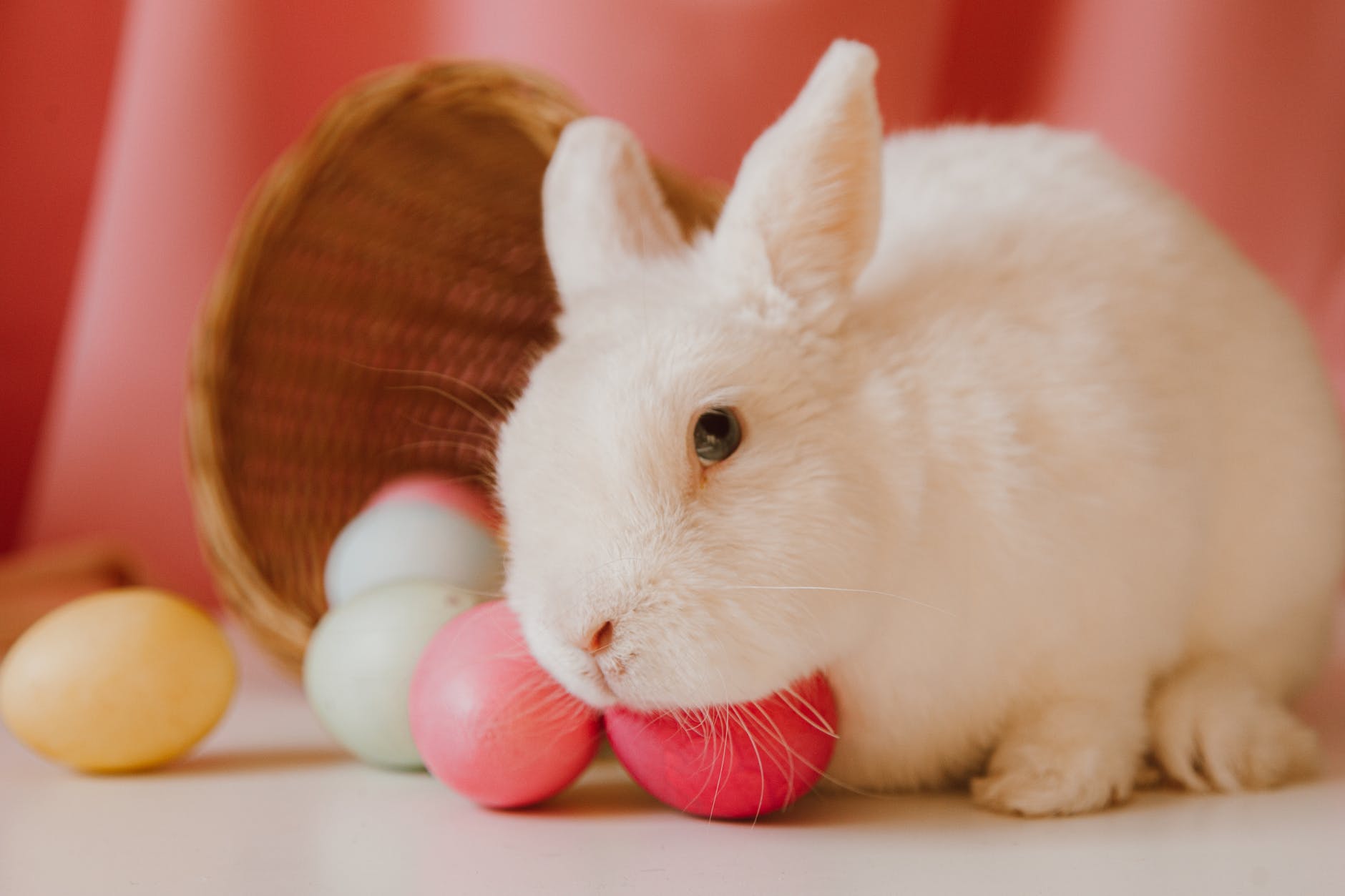When hearing the word Easter, often one would associate it with bunnies, decorative eggs, colorful baskets, egg hunts, delicious hams, and Jesus’ resurrection. But how did all these Easter customs and traditions start?
All around the world, there are tons of amusing facts and trivia about Easter. Some are symbolical, others are superstitious, and there are those that are historical or religious.
And with Easter just a day away, it would be fun to learn a bit about the origin and background of this widely celebrated holiday. Here are 50 of the most interesting facts about Easter:
1. In the Christian religion, Easter is the oldest and most important holiday. Although it began as a pagan holiday, Christians have adapted it and focused on the resurrection of Christ, not on its pagan aspects (like Easter bunnies).
2. Some believe the name Easter was derived from the Anglo-Saxon goddess called Eostre or Eastre, whose symbols are the egg and the hare. It’s also based on the Hebrew term for the Passover festival, the Pesach.
3. Easter is called by various names around the world: Ostern (Germany), Paaske (Norway), Paques (France), Pascha (Greece), Pascua (Spain), Pasen (Holland), Pashke (Albania), Pask (Sweden), Pasqua (Italy), among others.
4. In 325 AD, the Council of Nicaea proclaimed Easter as a true holiday. It declared Easter to be held on the first Sunday following the full moon, which falls after March 21, the equinox. Thus, Easter has always fallen between March 22 and April 25.
5. Maundy Thursday, Good Friday, and Holy Saturday—the last three days of Lent—are collectively termed the Easter Triduum or the Paschal Triduum.
6. A total of 95 countries celebrate Easter all across the world.
7. Evidence points to Easter eggs dating way back before Easter. They were said to have originated from Medieval Europe, and Christians might have not been the first to start the tradition of giving eggs.
8. The egg symbolizes new life—the resurrection of Jesus Christ.
9. In the thirteenth century, eating eggs during Holy Week was banned by the church. Later on, the marking of eggs laid during that Week began the tradition of egg decorating.
10. The two colors often associated with Easter are purple (the color of Lent and a symbol of repentance, humility, and melancholy) and yellow (which represents chicks as well as the new sun).
11. In ancient times, they made purple dye out of crushed shellfish from the Mediterranean Sea.
12. The first Easter eggs were dyed red to represent the blood of Jesus shed during His crucifixion.

13. Easter egg dyeing started in Ukraine, to call out to the gods and goddesses of fertility and health.
14. Before, egg dyes were made of natural materials, like tree bark, flower petals, onion peels, and juices.
15. The largest egg museum, the Easter Egg Museum, is found in Poland, with more than 1,500 eggs from around the world.
16. The most expensive egg costs USD 9.5 million, designed by jeweler Peter Carl Fabergé for the Russian czars.
17. The biggest decorated Easter egg in the world, which reaches 49 ft 3 inches tall and is 28 ft 7 inches in diameter, is found in Brazil.
18. The tallest chocolate Easter egg reaches 10.39 m in height with a circumference of 19.6 m at its widest point and weighs 7,200 kg. It was made in Tosca, Italy, in 2011.
19. In 1875, Cadbury made the first mass-produced chocolate Easter eggs.
20. Before chocolate Easter eggs were introduced in the early 1900s, gifts exchanged during Easter included stuffed hollow cardboard eggs and decorated chicken eggs.
21. The concept of the Easter bunny giving away eggs and candies started in Germany in the Middle Ages. It is said that in the 1700s, Dutch settlers in Pennsylvania brought the bunny to the United States.
22. The Easter bunny myth is rooted in a German legend about a woman decorating eggs and hiding them for her kids to find. According to the tale, it was based on a time when there was a famine in the land, so the eggs were considered precious gifts. And, as told, when the children found the eggs, they saw a hopping bunny leaving, naturally thinking that the bunny had left the eggs for them.
23. The first story about a rabbit hiding eggs in a garden was released in 1680.
24. The main idea of the Easter bunny was to check whether the children behaved good or bad at the start of the Easter season.

25. The largest Easter egg hunt world record included 501,000 hidden eggs at the Cypress Gardens Adventure Park in Florida in 2007, which was participated in by 10,000 children.
26. The idea of the Easter bunny that came from Germany was originally not a rabbit but a hare.
27. In Australia, bilbies are used instead of bunnies. Bilbies are marsupials that look like rabbits, which are now considered endangered species.
28. In Westphalia, Germany, they use fox at Easter time instead of bunnies.
29. In Switzerland, the deliverer of goods during Easter is cuckoos.
30. Second to Halloween, Easter is one of the highest in candy sales every year.
31. Seventy percent of candy bought during Easter is chocolate.
32. Jellybeans are children’s favorite candy during Easter, and red is their favorite color.
33. The most popular color for marshmallow Peeps is yellow.
34. The first celebrity who was made into a chocolate bunny was Benedict Cumberbatch in 2015.
35. The first Easter baskets looked like a bird nest.
36. Lamb is one of the symbols of Easter for many reasons. First, they were used as sacrificial animals in the Old Testament. Second, it was lambs’ blood that the Hebrews put on their doors during the Passover. Third, and most importantly, Jesus is called the Lamb of God in Scripture.
37. Lily is associated with Easter because it is shaped like a trumpet that sounds the message of Jesus’s resurrection. Also, the way in which it grows, from an ugly bulb underground to a beautiful flower, represents hope and rebirth, just like Christ’s death and resurrection.

38. In the old days in Europe, the treats associated with Easter are hot cross buns, which monks give to the poor during the Lenten season.
39. In some countries, Easter is also symbolized by candles, cross bonfires, and palm leaves.
40. The lighting of a candle during Easter is a symbol of the risen Christ or Christ as the Light of the world.
41. In Finland, children get dressed up like witches on Easter. They decorate willow twigs with colorful ribbons and papers to symbolize the palm leaves that people waved to Jesus as they welcomed Him to Jerusalem, an event now known in the Christian religion as Palm Sunday. The children then go door to door offering to bless the houses and cast away evil spirits in exchange for some sweets.
42. In Sweden, the children dress up like Easter wizards.
43. In Mexico, hollowed-out eggshells are filled with confetti and then hidden as part of the egg hunt. When found, they are cracked over people’s heads. These eggs are called cascarones and are thought to bring luck to the person hit by them.
44. In Scotland and Northeast England, some people roll painted eggs down steep hills as a fun activity on Easter.
45. The American President who introduced an Easter bunny to the annual White House Easter Egg Roll was Richard Nixon.
46. The most popular Easter activity is visiting family and friends.
47. In Poland, boys traditionally throw buckets of water over girls during Easter.
48. In Germany, it is illegal to dance in public on Good Friday in respect of Christians, who grieve for the death of Jesus Christ.
49. The dance commonly done at Easter time is called the Bunny Hop.
50. One of the most popular Easter hymns around the world is Christ the Lord Is Risen Today.

